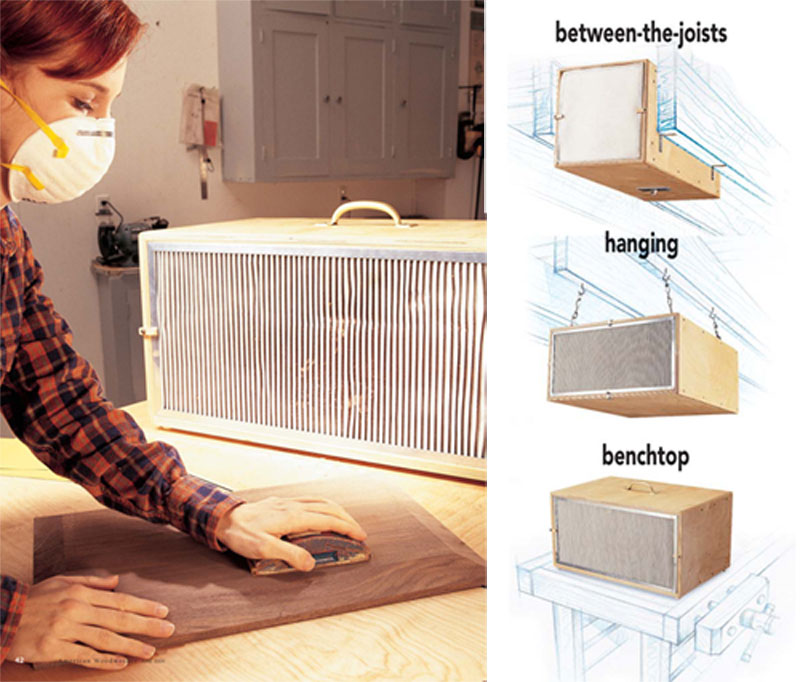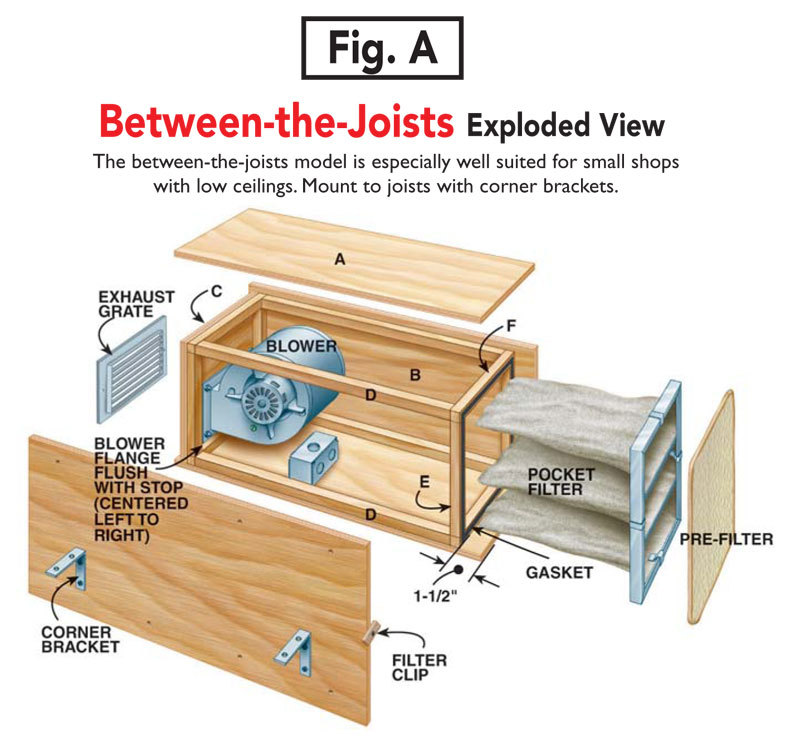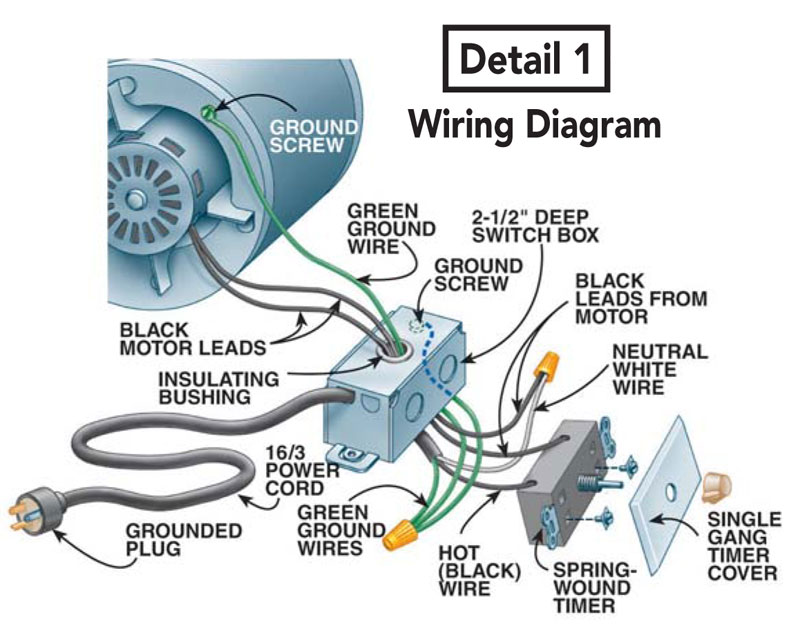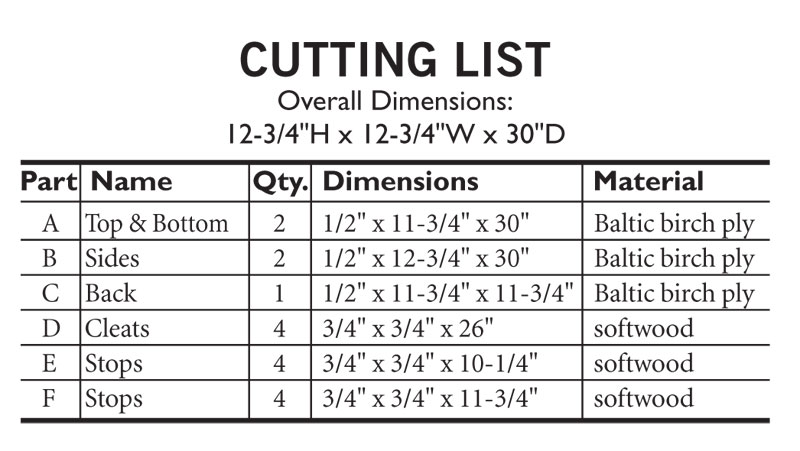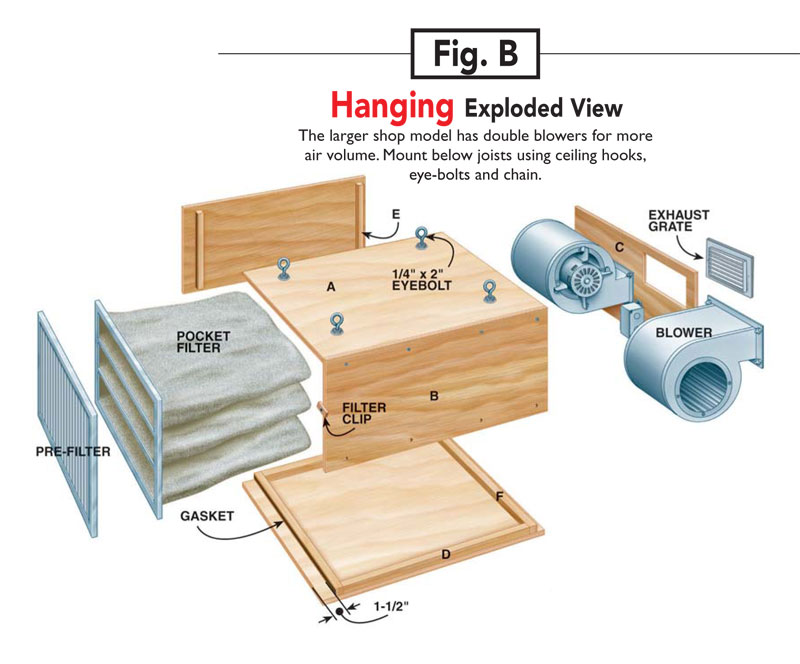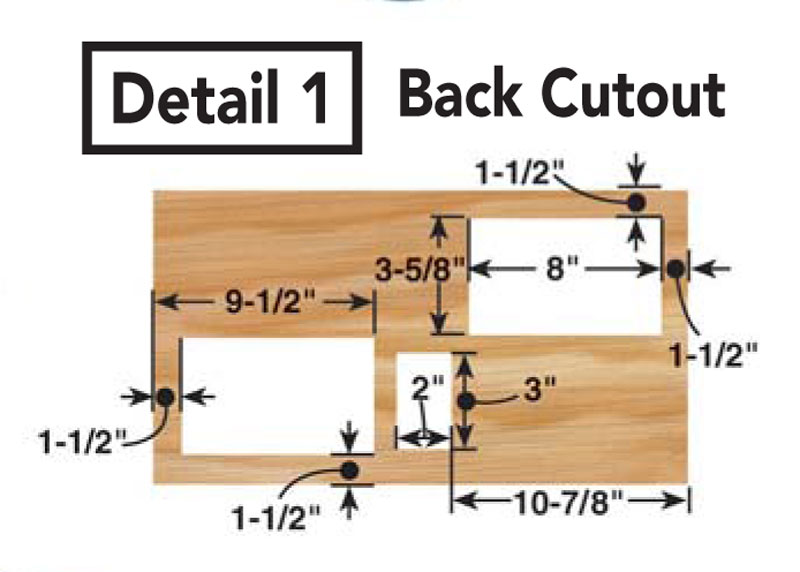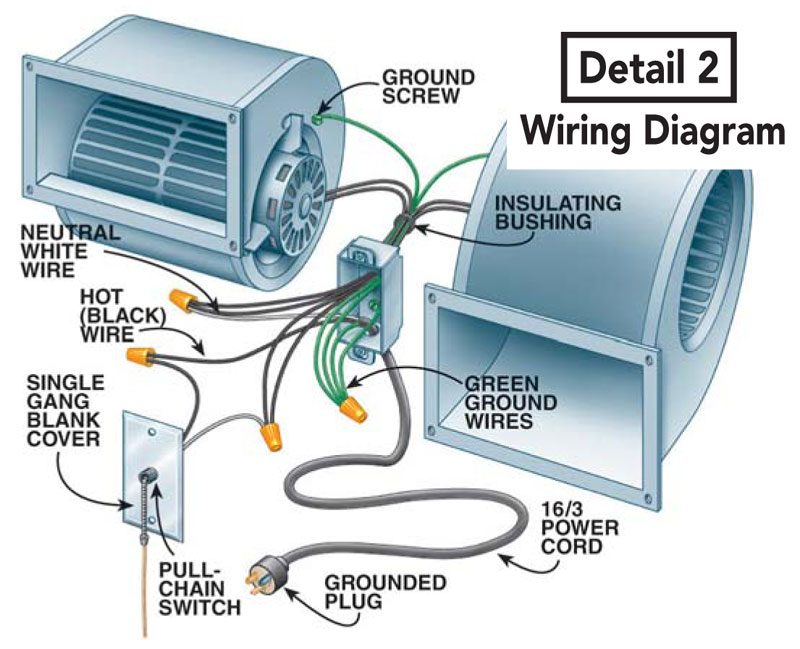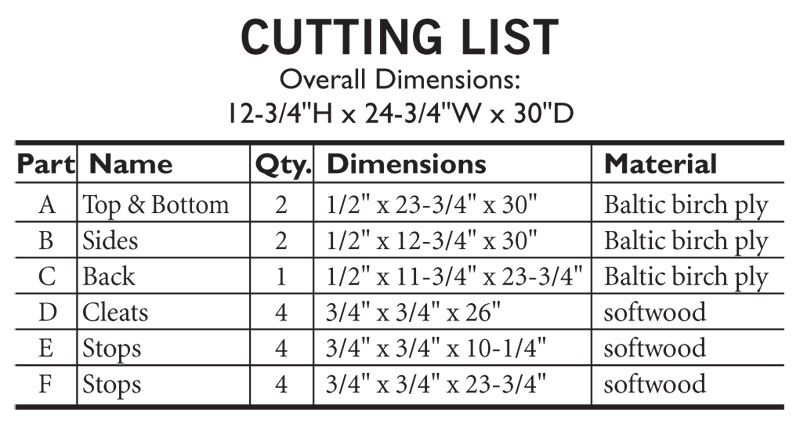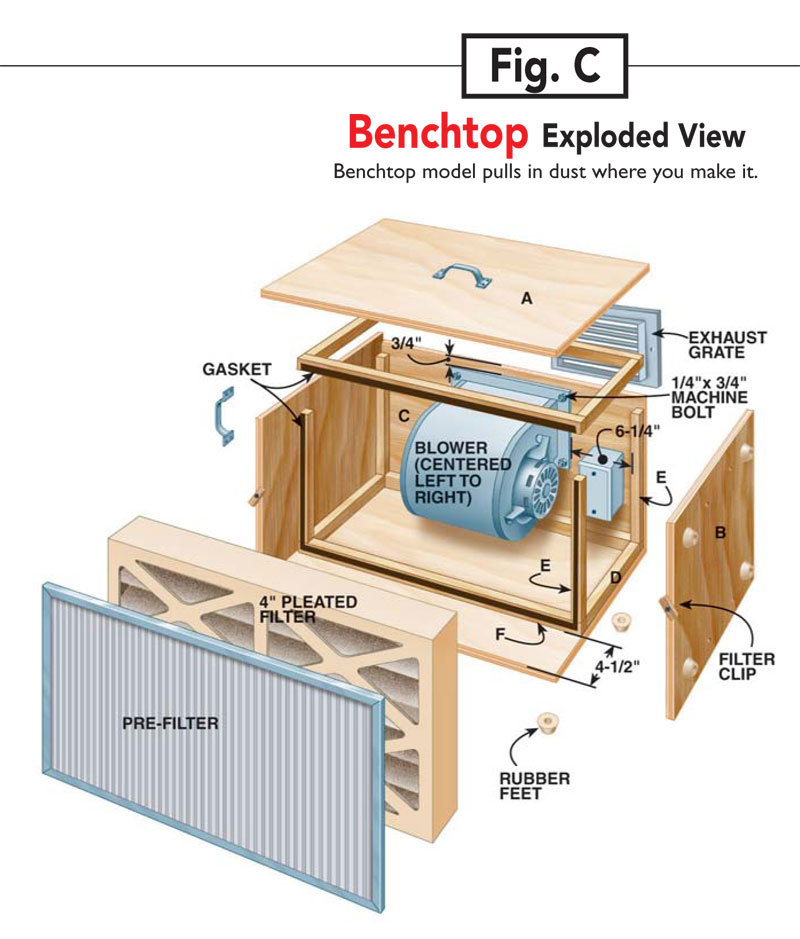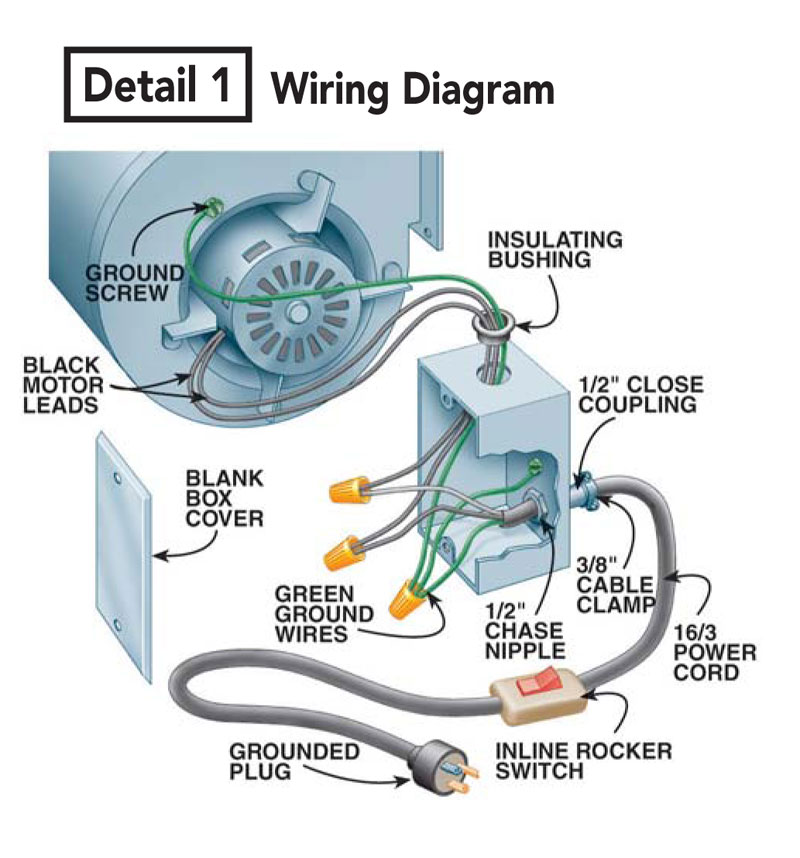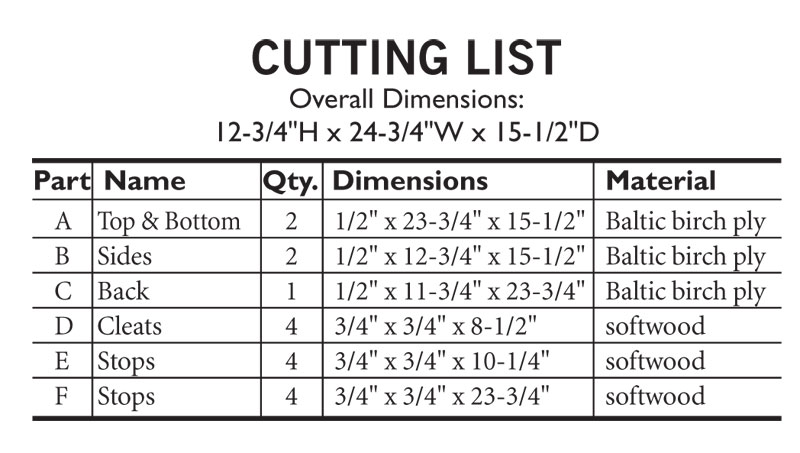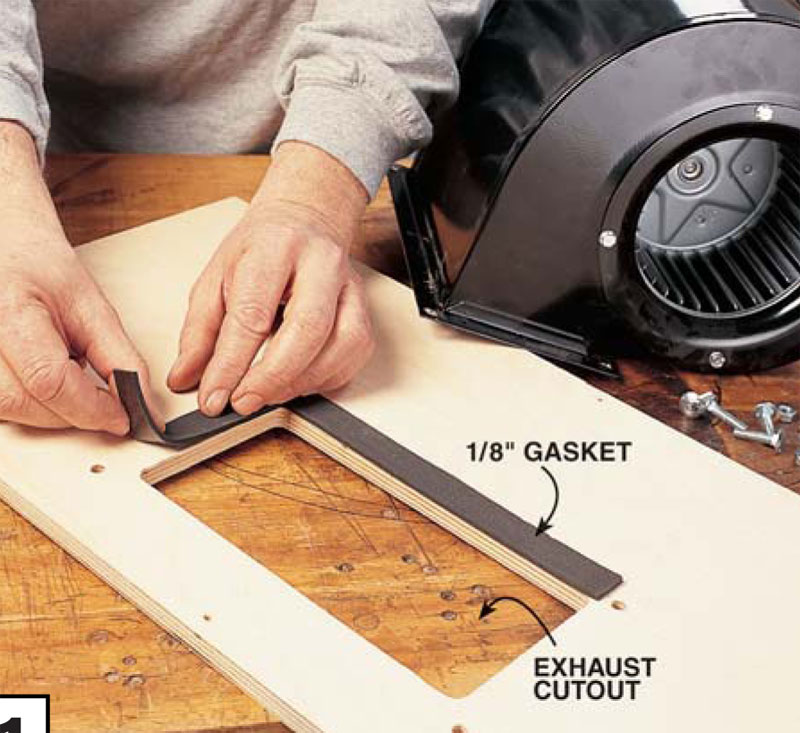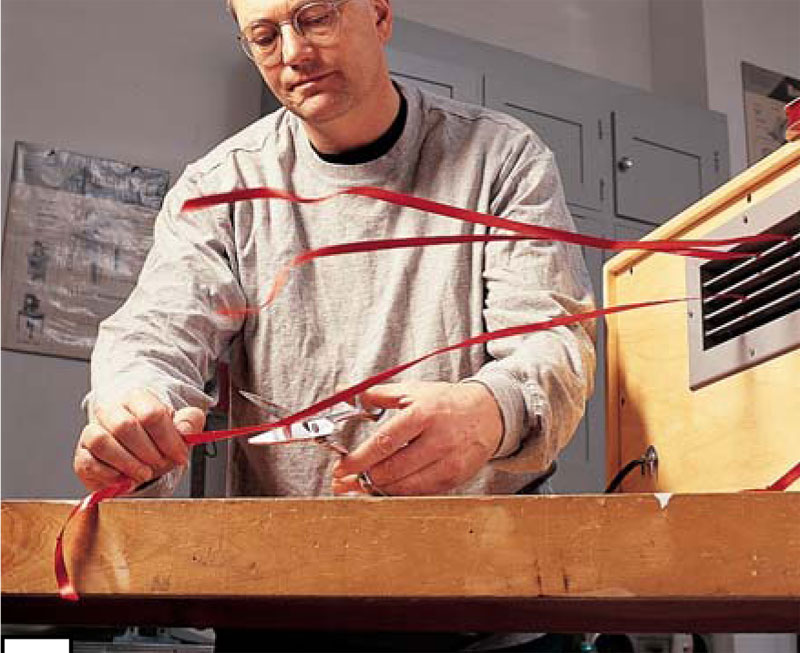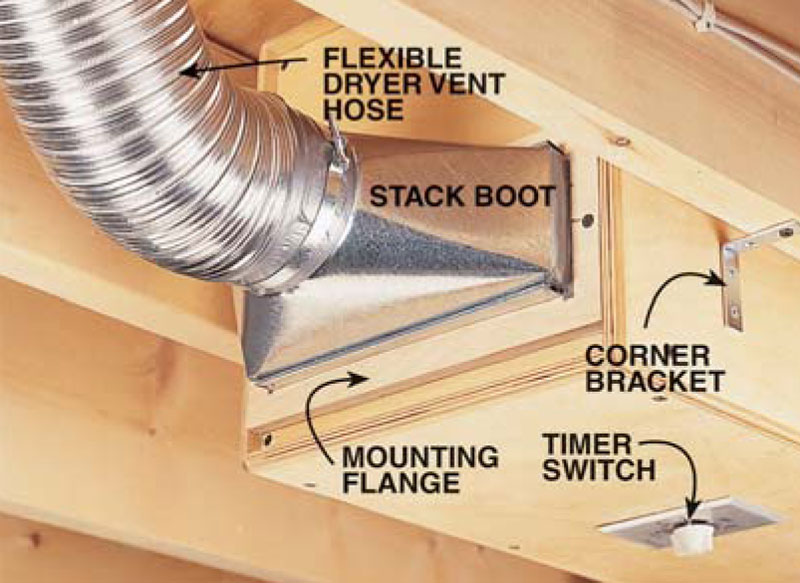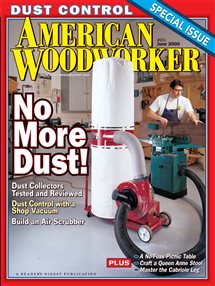We may receive a commission when you use our affiliate links. However, this does not impact our recommendations.
Air Scrubber Trio
Three shop-made machines that clear the air.
By Ed Krause
Dust haze.Even if you have a dust collection system you’ve probably found yourself in the middle of it. This fine dust settles onto all the surfaces of your shop where it is a fire hazard (as well as a nuisance) and can lead to respiratory problems. A strategically placed air scrubber can trap much of this dust, keeping your shop cleaner and safer.
Here are three shop-built air scrubber designs: a between-the-joists design for small shops with limited headroom; a hanging model for larger shops; and a benchtop model to catch dust near its source. Each scrubber is based on a kit available from Penn State Industries (see Sources, below).
Once you’ve gathered your materials, you can build any one of these scrubbers in a day. The benchtop and between-the-joists models can be built for $150, the larger model for $220. If you are resourceful enough to find a used furnace blower and use shop scrap,any model can be built for $60.
Although these designs are similar to scrubbers available commercially, our scrubbers either cost less or have better features.To make it easy for you to find components, we’ve used kits and filters available through catalogs (see Sources, page below). Remember that no air scrubber is a substitute for a dust collector attached to your machines. It is always best to catch dust at its source, before it becomes airborne. However, an air scrubber can trap much of the fine dust that eludes your primary dust-collection system.
Which Design is Best for Your Shop?
These scrubbers are variations of the same machine, differing in size and where they are placed in your shop.Choose the one that’ll work best for you.
The benchtop model is small enough to be used where it’s needed,whether it be on your bench when hand sanding, or placed on a stool near your lathe. The between-the-joists model is ideal for a small (500 sq. ft.) basement shop with low ceilings.The larger model has two blower fans enabling it to clean air in a shop twice as large (up to 1,000 sq. ft.) as the other two models.
The capacity of your scrubber is another important consideration. For occasional woodworking you need a scrubber that can recirculate all the air in your shop six times every hour or once every 10 minutes.A scrubber’s performance is measured by the number of cubic feet per minute (cfm) of air it can handle.
You can determine exactly how many cfm are required to change the air in your shop six times every hour by measuring the cubic feet of air space in your shop (LxWxH) and dividing that number by 10 (professional woodworkers should divide by 6). For example, if your shop floor space is 25 ft.by 20 feet and your ceilings are 8-ft.high, then your cfm requirements are: 20 x 25 x 8 = 4,000 cubic ft./10 minutes which is 400 cfm.Each of the motors in the Penn State kits are rated at 465 cfm, which is adequate to handle a 500-sq.-ft. shop with 8- to 9-ft. ceilings.For a 1,000-sq.- ft. shop, use two of the single-blower units or build the larger double-blower unit.When in doubt, over do it.This is one case where more is definitely better.
About Filters
There are usually two filters used in an air scrubber: a pre-filter and a pocket filter. The pre-filter prolongs the life of the pocket filter by capturing most of the larger particles first. The pocket filter has a much greater surface area for trapping the finer dust.
To make a scrubber small enough to fit on a bench we substituted a 4-in.pleated filter for the pocket filter. Pleated filters can provide as much or more filter area as pocket filters and are available from Grainger in different levels of efficiency (see Sources, below).For our air scrubber we chose a 75-percent efficient filter ($28) which is more efficient than the pocket filters found in most air scrubbers on the market.A 90- to 95- percent efficient filter is available for $84. If you’re willing to fork over the money, it’ll last longer and catch finer dust.
The Finishing Touches
Mount the between-the-joists scrubber with corner brackets (Photo 3). The larger model should be hung using eye bolts, ceiling hooks and chain. Add handles and rubber feet to the benchtop model so it can be used vertically or horizontally. It’s best to place a scrubber where you make the most dust, and as low as is feasible.None of the three models are heavy, but mounting the overhead models safely is a two-person job.
Add-On-Features
Add ribbons to the exhaust louvers so you know when it’s time to replace or clean your filters (Photo 2). A timer switch enables you to leave the scrubber on when you’re not in the shop. The exhaust port of the air scrubber can be ducted outside, like a bathroom fan, to vent lowconcentration fumes when brushing or rag-applying finish (Photo 3). The cost for parts is less than $30. To make, simply cut a piece of plywood slightly smaller than the back of the scrubber to use as a mounting flange for the stack boot. Cut an opening in the flange to allow the boot to fit through. Attach the boot to the inside of the cutout with silicone caulk and screws.To hook up the stack boot for outside venting, simply screw on the flange over the exhaust port with a pair of screws. Be sure to remove your pocket filter to help increase airflow when operating your scrubber as a vent. When you’re done venting, simply unscrew the mounting flange, replace your pocket filter and you’re back to scrubbing the air in your shop.Now you can breathe easier.
Between-the-Joist
Hanging
Benchtop
Making the Scrubbers
All three models are similarly built.
1.Cut plywood to size.We used Baltic birch, (see Sources, below) but any 1/2-in. plywood will work.
2.Cut the cleats to length.
3. Glue and nail cleats to the top and bottom. Be sure to position the cleats precisely, as shown for each model (See Figs.A, B or C), to allow room for the filters, stops and gaskets on the intake end and for the back and gasket on the exhaust end.
4.Glue and nail the long stops at the end of each pair of cleats.
5.Use screws to attach the sides to the cleats on the top and bottom.
6.Glue and nail the short vertical stops on the exhaust and intake ends.
7. Lay out the motor flange location on the inside of the back. Set the motor in place and mark the screw hole locations.Make lines 3/4-in. inside the motor flange outline for the exhaust port cutout.Cut holes for the exhaust port and electrical box with a jigsaw.
8. Drill bolt holes for the motor. The holes need to be countersunk on the outside face of the back to allow for the exhaust louvers.
9. Mount the motor to the back (Photo 1).
10.Mount the electrical box and wire according to your choice of switches (see Figs.A, B or C). (Between-the-joists model must be wired after the back is attached.)
11. Apply gasket to back stops.
12. Fasten the back to the scrubber with screws.
13. Screw the exhaust louvers over the port.
14.Add the filter clips and apply gasket material to the filter stops. Install the filters.
15.Ease the edges with a router and a 1/8-in. round-over bit or sandpaper.
1. Apply gasket material around the cutout after the bolt holes have been drilled. Be sure to countersink the holes on the outside face of the back or the bolt heads will interfere with mounting the exhaust grate.
2. Ribbons are a low-tech way to tell when filters need cleaning or changing.Tie them on long, turn on the machine and shorten them until they flutter horizontally. When they droop, clean or change the filters.
3. Two upgrades: 1.Your air scrubber can double as a fan for venting fumes from finishing. Mount an easily detachable stack boot to the exhaust port. Add flexible duct and vent through the wall like a clothes dryer. Never use in place of a spray booth. 2. A timer switch with a hold feature enables you to continue cleaning the air after you’ve left your shop.
Sources
Note: Product availability and prices are subject to change.
Grainger, grainger.com, 847-647-8900, 4-in. pleated Filters, #5E894; Air Filter gasket, #6C523; Timer switch with hold, #2E270.
Penn State Industries, pennstateind.com, 800-377-7297, Kit #ACAW1; Kit #ACAW2; Kit #AC930; Lone Ranger II dust collector remote switch, #LR 110.
Woodworker’s Supply, 800-645-9292, Woodtek 11. x 11.5 in. pre-filter, #923-852; Pocket filter, #923-845.
Integrity Wood Products, 800-831-7374, 1/2-in. Baltic Birch, 5 ft. x 5 ft.
Local home centers carry many of the miscellaneous items.
This story originally appeared in American Woodworker June 2000, issue #80.
Here are some supplies and tools we find essential in our everyday work around the shop. We may receive a commission from sales referred by our links; however, we have carefully selected these products for their usefulness and quality.



